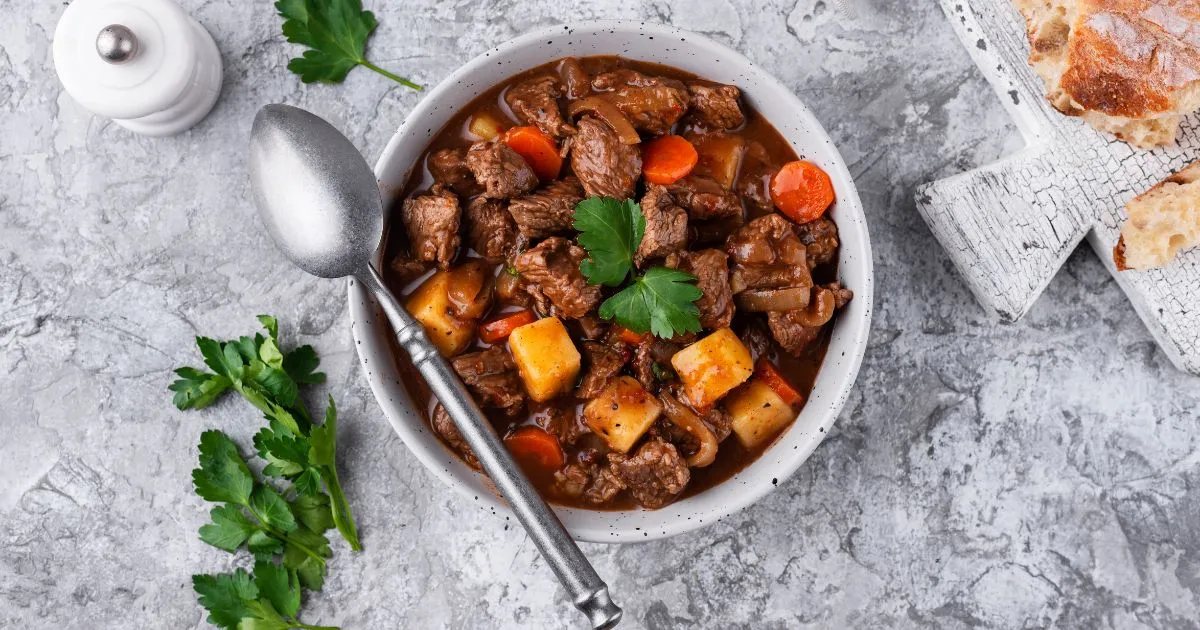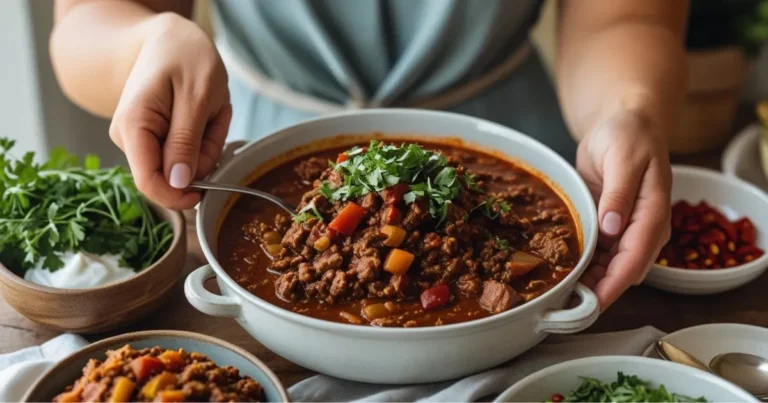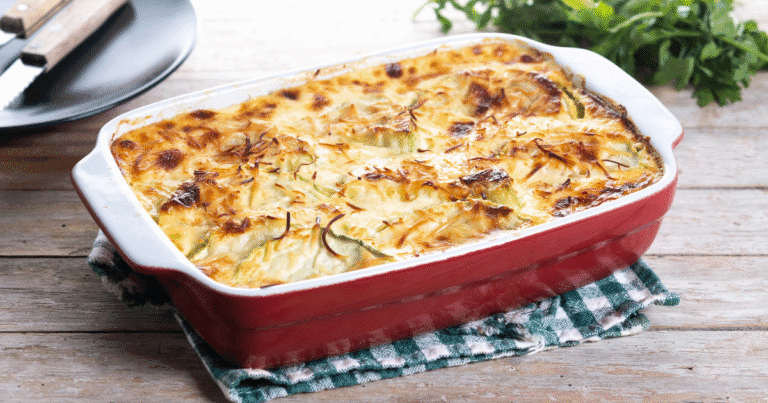Slow Cooker Beef Stew Recipe – Hearty, Easy & Delicious!
There’s something magical about walking into a home filled with the rich, savory aroma of slow cooker beef stew. It’s comfort in a bowl a warm embrace after a long day, a nostalgic reminder of family dinners, and the perfect solution for busy weeknights.
Whether you’re a seasoned home cook or just getting started with your slow cooker, this foolproof beef stew recipe guarantees tender meat, a deeply flavorful broth, and minimal effort. No babysitting the stove, no complicated steps just set it, forget it, and come back to a meal that tastes like it simmered for hours (because it did).
Let’s dive into everything you need to know to make the best slow cooker beef stew from choosing the right cut of beef to pro tips that take it from good to unforgettable.
Table of Contents
Why Slow Cooker Beef Stew Belongs in Your Recipe Rotation
If you’ve ever hesitated to make beef stew because it seems time-consuming, the slow cooker is your secret weapon. Here’s why this dish deserves a permanent spot in your meal plan:
✅ Effortless Cooking – Toss in the ingredients, turn it on, and let the slow cooker do the work. No stirring, no worrying about burning.
✅ Budget-Friendly – Tough, inexpensive cuts of beef (like chuck roast) become melt-in-your-mouth tender with slow cooking.
✅ Meal Prep Hero – This stew tastes even better the next day, making it perfect for leftovers or freezer meals.
✅ Endlessly Customizable – Swap veggies, adjust seasonings, or add a splash of wine for a gourmet twist.
No wonder it’s a fan-favorite comfort food—simple, satisfying, and packed with flavor.
The Stylish Cuts of Beef for Slow Cooker Stew
Not all beef is created equal when it comes to stew. You want a cut that stays tender after hours of cooking while infusing the broth with rich, meaty flavor. Here’s what works best:
| Cut of Beef | Why It Works | Best For |
|---|---|---|
| Chuck Roast | Well-marbled with fat, breaks down into tender, juicy bites | Classic, hearty stew |
| Brisket | Deep beefy flavor, becomes fork-tender | Rich, robust stews |
| Round Roast | Leaner but still tender when slow-cooked | Healthier versions |
| Short Ribs | Ultra-rich, falls off the bone | Decadent, restaurant-style stew |
Pro Tip: Avoid lean cuts like sirloin—they can turn dry and tough with long cooking times.
Classic Slow Cooker Beef Stew Recipe
This tried-and-true recipe delivers a rich, savory stew with minimal effort. Follow these way for reliable results every time.
Ingredients You’ll Need
- 2 lbs beef chuck roast, cubed
- 3 large carrots, chopped
- 3 Yukon Gold potatoes, diced
- 1 onion, sliced
- 4 mugs beef broth( low- sodium for better control)
- 2 tbsp tomato paste (for depth)
- 3 garlic cloves, minced
- 1 tsp dried thyme
- 1 bay leaf
- Salt & black pepper to taste
- 2 tbsp flour (for thickening, optional)
Step-by-Step Instructions
- Sear the Beef (Optional but Recommended)
- Pat the beef dry, season with swab and pepper.
- Heat oil in a skillet over medium-high heat, then sear the cubes in batches until browned (about 2-3 minutes per side). This adds deep, caramelized flavor.
- Layer the Slow Cooker
- Add onions, carrots, potatoes, and seared beef.
- Whisk together broth, tomato paste, garlic, and thyme, also pour over the meat and veggies.
- Toss in the bay leaf.
- Cook Low and Slow
- Cover and cook on LOW for 7- 8 hours( or HIGH for 4- 5 hours) until beef is chopstick- tender.
- Thicken the Stew (Optional)
- Mix 2 tbsp flour with ¼ cup cold water, stir into the stew, and cook an additional 20 minutes.
- Serve & Enjoy!
- Discard the bay leaf, taste for seasoning, and garnish with fresh parsley.
Serving Suggestion: Pair with crusty bread or buttery mashed potatoes for the ultimate comfort meal.
5 Pro Tips for the Best Slow Cooker Beef Stew
Want to take your stew from good to restaurant-quality? Follow these expert tricks:
- Sear the Meat First – Browning creates a flavorful crust (thanks to the Maillard reaction). Skipping this step means missing out on depth.
- Deglaze the Pan – After searing, pour a splash of broth or red wine into the skillet to scrape up browned bits, then add to the slow cooker.
- Don’t Overcrowd – Give the beef space to sear properly (cook in batches if needed).
- Add Delicate Herbs Last – Fresh parsley or rosemary should go in during the last 30 minutes for maximum freshness.
- Let It Rest Before Serving – Allowing the stew to sit for 10-15 minutes helps flavors meld.


3 Flavorful Variations to Try
Switch things up with these delicious twists:
🍷 Red Wine Beef Stew
- Replace 1 cup broth with dry red wine (like Cabernet).
- Add 1 tbsp balsamic vinegar for extra richness.
🍺 Guinness Beef Stew
- Swap ½ cup broth for Guinness beer (adds a malty, slightly bitter depth).
- Toss in 1 tbsp Worcestershire sauce.
🍄 Mushroom & Herb Stew
- Add 8 oz sliced cremini mushrooms.
- Stir in 1 tsp fresh rosemary with the thyme.
FAQ – Your Slow Cooker Beef Stew Questions Answered
Q: Can I make slow cooker beef stew ahead?
A: Absolutely! In fact, it tastes even better the next day as flavors deepen. Store in the fridge for over to 3 days or indurate for 3 months.
Q: Can I use frozen vegetables?
A: Yes, but add them in the last 2 hours to prevent mushiness.
Q: How do I cake beef stew without flour?
A: Try mashed potatoes, cornstarch slurry (1 tbsp cornstarch + 2 tbsp water), or simmer uncovered to reduce.
Q: Can I cook this on HIGH rather of LOW ?
A: Yes (4-5 hours on HIGH), but LOW heat yields more tender beef.
Final Thoughts: Your New Go-To Comfort Meal
There’s a reason slow cooker beef stew has stood the test of time—it’s hearty, forgiving, and endlessly adaptable. Whether you stick to the classic version or experiment with bold flavors, this dish is guaranteed to satisfy.
So, dust off that slow cooker, grab a chunk of chuck roast, and let your kitchen fill with the kind of aroma that makes everyone ask, “When’s dinner?”
Hungry for more? Try this recipe tonight and tag us on social media with your creations—we’d love to see your twist on this comfort food classic! 🍲
Your Feedback Helps Us Grow!
There are no reviews yet. Be the first one to write one.





